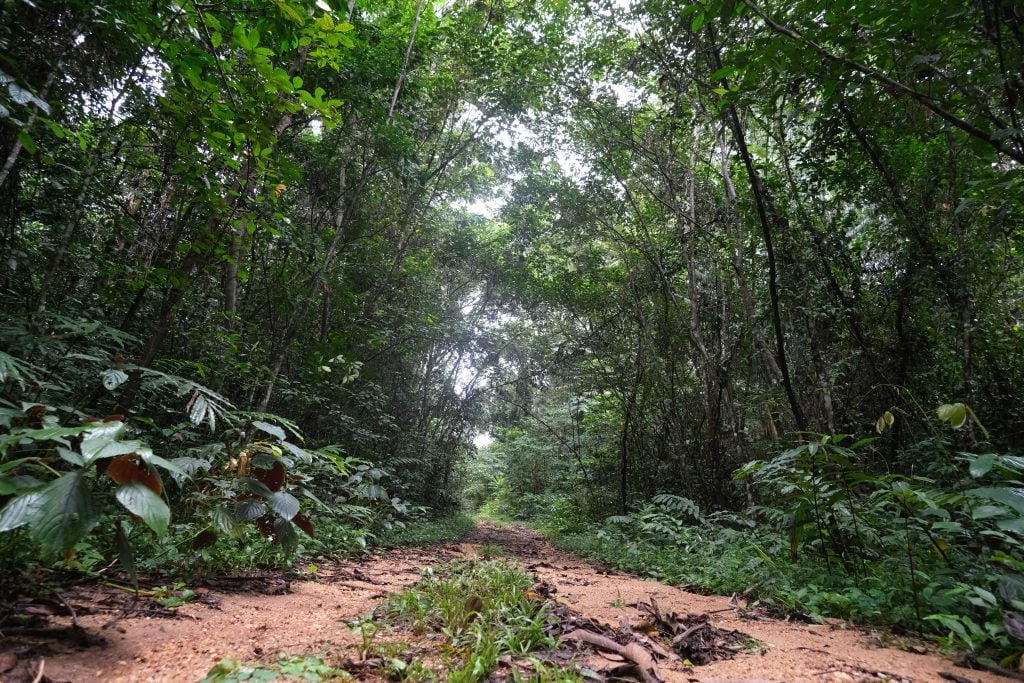
COP16, the global biodiversity summit, kicked off this week in Cali, Colombia at a time when global threats to nature are becoming ever more severe. Amid climate change and habitat loss, the World Wildlife Fund reports that the wildlife populations it monitors have declined by 73% since 1970. The extent of the crisis is such that many scientists fear the Earth is heading for a sixth ‘mass extinction’ – the first since the asteroid impact that wiped out the dinosaurs 65 million years ago.
Policymakers gathering in Cali are looking to implement targets set two years at COP15 in Montreal, which agreed an ambitious agenda to strengthen habitat protections and ultimately stem the loss of nature. Among the key targets agreed for 2030 were pledges to extend protected areas to cover 30% of all land and water, to restore 30% of degraded ecosystems, and to reduce losses of the highest value ecosystems to ‘near zero’. Africa will need $25bn a year to meet these goals up to 2030, according to non-profit organisation NatureFinance.
One idea beginning to gain traction is the use of ‘biodiversity credits’ to support conservation. A report published by NatureFinance ahead of COP16 maps around 30 biodiversity credit projects that are at various stages of development in Africa.
“There’s an incredible opportunity here”, says Monique Atouguia, programme manager for nature markets at NatureFinance. Biodiversity credits are designed to work in a somewhat similar way to the more established market for carbon credits; the idea is that by purchasing a biodiversity credit, a company can finance activities that benefit nature.
While many carbon credit projects are also designed to boost nature, Atouguia points out that biodiversity credits offer opportunities to invest in “different kinds of conservation”, beyond habitats designed to grow trees or other vegetation that sequester carbon.
Africa has a particularly crucial role to play in combatting the nature crisis. The continent is home to 25% of global biodiversity and stands as the last refuge for much of the world’s great megafauna. Many of Africa’s ecosystems are, however, under growing pressure as the human population and economic activities expand. As a result, Atouguia says, there is an “existential case” for measures that create an economic rationale for conserving nature.
Growing the market?
A number of major conservation organisation organisations are already experimenting with biodiversity credit schemes. WWF, for example, has a ‘wildlife credits’ scheme in Namibia that delivers payments to communities based on their performance in conserving biodiversity. The NGO says that the scheme can help to reduce dependence on tourism and hunting fees.
Meanwhile, the environmental services company Sylva, is working with the Great Plains Foundation, a conservation organisation, on biodiversity credit projects in Botswana, Kenya and Zimbabwe. Sylva’s founder Marc Maleika told African Business last month that biodiversity credit projects would help to provide a financial incentive for measured and verified conservation success, adding that this could bring “rigour and digitalisation” to the sector.
Yet the NatureFinance report notes that biodiversity credits remain nascent, both in Africa and globally. The worldwide value of biodiversity credit schemes is just $2-8m, according to the UN Environment Programme. There is not yet an active ‘market’ for these credits to be traded. And no African country has established regulations to govern biodiversity credits and put in place conditions for demand to grow.
Many observers also have doubts about the logic behind biodiversity credits. While carbon emitted in one part of the world can, theoretically, be ‘offset’ with actions that sequester carbon elsewhere, an equivalent form of offsetting is not possible with biodiversity. Damage to a particular ecosystem cannot simply be compensated for with support for conservation in another ecosystem.
This raises an awkward question: what’s in it for buyers of biodiversity credits?
It is true that major companies have come under scrutiny over their nature impacts in recent years. They are also under increased pressure to report and disclose these impacts as a result of the recommendations published last year by the Taskforce on Nature-related Financial Disclosures. As yet, however, there are very few regulations that require companies to invest in protecting biodiversity. Purchasing biodiversity credits therefore remains purely voluntary.
NatureFinance’s report acknowledges that there is “little evidence of committed buyers”, despite some “supply-side collaborations”. It notes that “at a governance level there are currently few policy incentives driving buyers to purchase these products” and cautions that grant-funding is likely to be needed to help projects get off the ground.
Nature superpowers
Despite these challenges, Atouguia says that biodiversity credits are “one instrument of many” that could be used to help “develop the entire nature finance ecosystem across the continent”.
“Conservation actors who have been financing their conservation work in very traditional ways, through philanthropy or grants or government support, are now saying, ‘we’re at a crisis point where this money is not enough, it’s not consistent, and we need to figure out how to attract private finance.’ And these credits are one way in which they are pursuing private finance.”
She adds that establishing policies and regulations will be key to ensuring the biodiversity market can “grow with integrity” and avoid some of the reputational missteps that have plagued the carbon market. Indeed, effective policies and regulations will ultimately be key to creating demand for biodiversity credits.
“Without some serious action at the non-market level”, Atouguia says, “we’re not going to see demand scale in any meaningful way.” She suggests that international agreements and commitments should be utilised to create incentives for companies to purchase biodiversity credits. Regulations at the national level could also be used to require that companies deliver a ‘net-gain’ in biodiversity when investing in new developments, she adds.
A handful of countries, including Colombia, Australia and the United Kingdom, have already began implementing policies around nature offsetting biodiversity net-gain. Whether these could encourage investment in international conservation remains to be seen, however.
NatureFinance outlines several possible scenarios for how biodiversity credits may develop in Africa. One is that the market remains localised, with specific projects achieving important successes, but with limited benefits for the overall nature finance ecosystem. Another is that greater international regulation around biodiversity leads to investors scrambling to purchase land that can be used for biodiversity credits, which could lead to local needs being ignored in favour of international investor interests.
The most positive scenario is that policies and regulations guide the market’s development, ensuring financial benefits are shared locally and that biodiversity conservation projects are able to achieve significant scale. This, it says, can help large parts of Africa become “nature economy superpowers”.









Comments